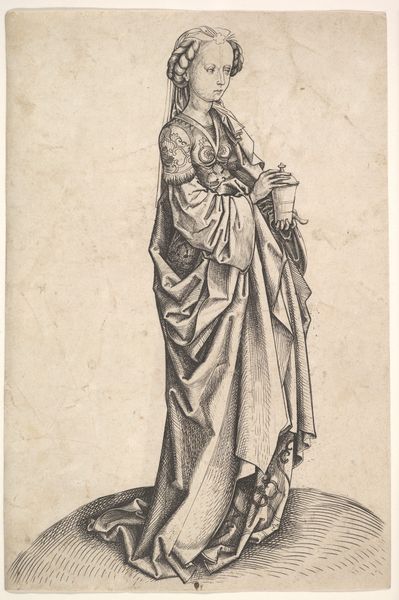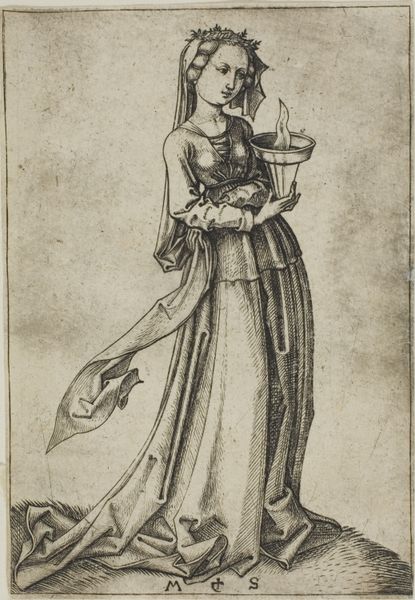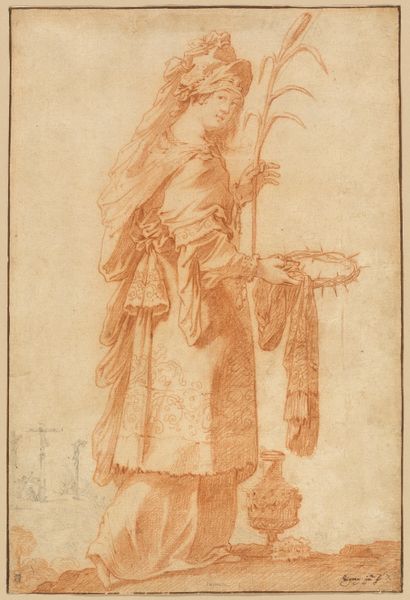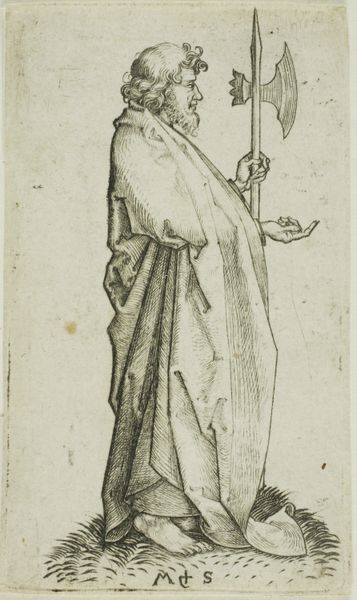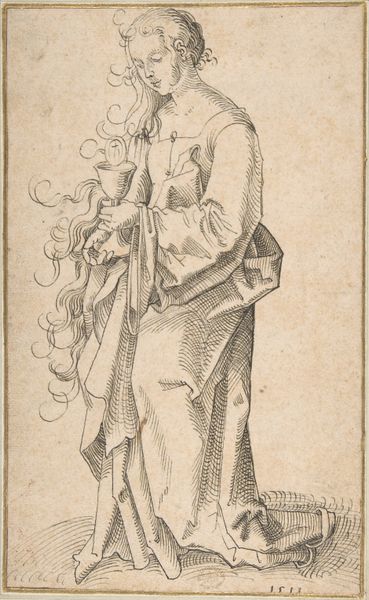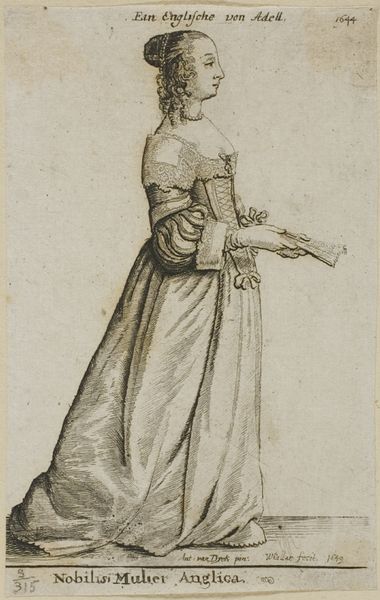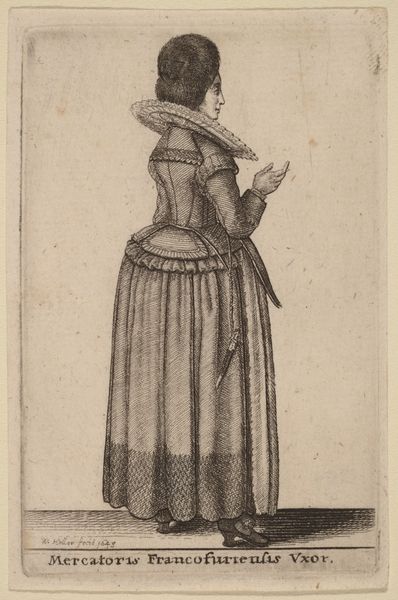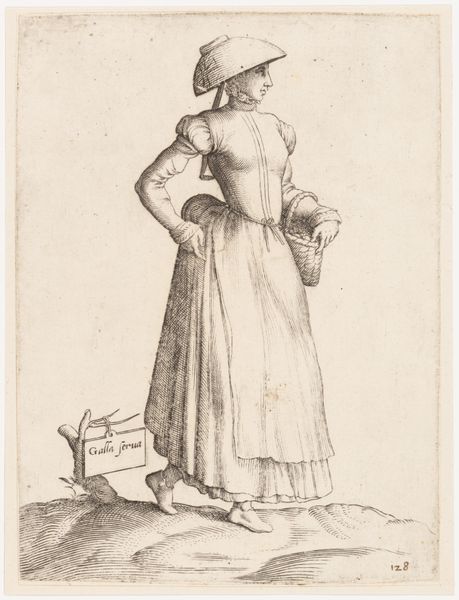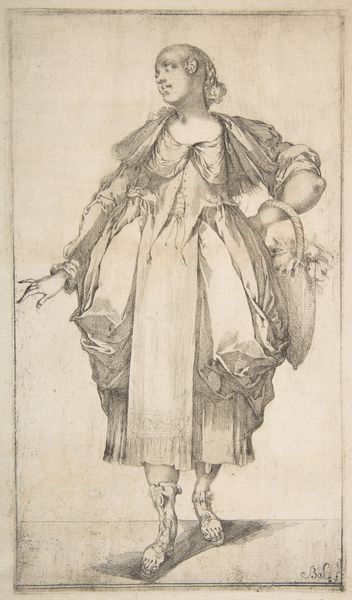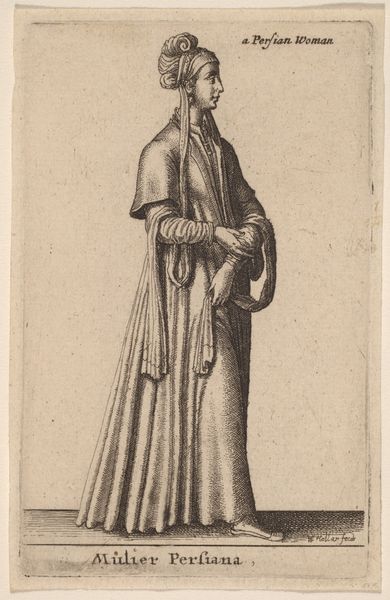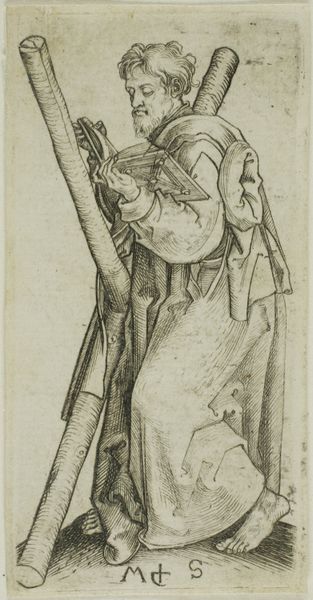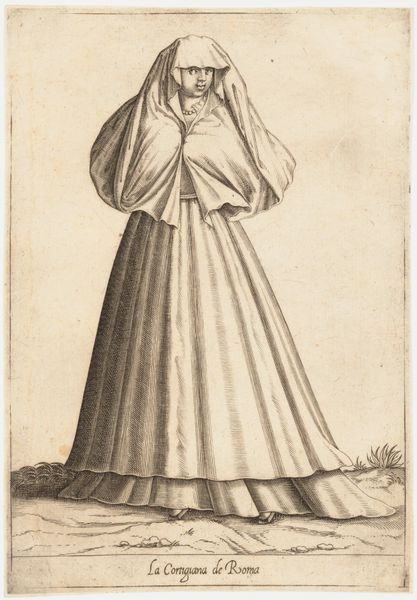
print, engraving
#
portrait
#
medieval
# print
#
figuration
#
northern-renaissance
#
engraving
Copyright: National Gallery of Art: CC0 1.0
Editor: Here we have Israhel van Meckenem’s “Saint Mary Magdalene” from around 1470, a print made using engraving. It strikes me how somber it is; even with the halo, she doesn't seem particularly joyful. What do you see in this piece? Curator: Well, considering this was created during a period of significant religious and social change, it's vital to examine its public role. The printing press democratized imagery, but what kind of Magdalene is being presented here, and for what audience? Notice how she’s not just a repentant sinner, but elegantly dressed, holding an ointment jar, signaling her role in Christ's anointing. What does this imply about the artist's message and who he was trying to reach? Editor: That’s interesting, I hadn’t thought about the socio-political implications of prints like this being more widely available. It seems like he's focusing on her status almost, with her ornate clothing and the care taken with representing that texture in the engraving. Was this perhaps for a wealthier audience then? Curator: Exactly! The level of detail suggests an audience capable of appreciating and affording such craftsmanship. Think about how religious figures were typically presented; this departs from earlier depictions. And note her direct gaze – it implicates the viewer, doesn't it? Perhaps encouraging a more personal relationship with faith, shaped by individual reflection rather than purely through the church. How might that challenge the established social order? Editor: That’s a fascinating point about challenging the established order. I guess I was seeing it only as a religious icon, but it’s clearly more complex, engaging with social and political ideas of the time. Curator: Indeed. It makes you think about the politics of imagery even within seemingly devout representations, right? This print is much more than just a devotional object; it's a statement within the evolving landscape of religious and social identity. Editor: Absolutely. It definitely sheds light on the intersection of art, religion and society in the late 15th century.
Comments
No comments
Be the first to comment and join the conversation on the ultimate creative platform.
